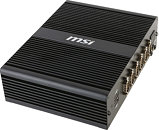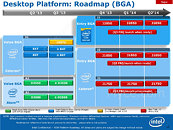
MSI Announces MS-9A69 Fanless IPC Based on "Broadwell" SoC
MSI released a new compact-size industrial BOX PC, MS-9A69. It's a fanless embedded BOX PC that comes with the Broadwell or the BayTrail platform, satisfying different applications that require high-performance or low-power computing kernel. MS-9A69 supports 2 or 3 independent displays, versatile DC input of 12V/19V/24V, 2 Mini-PCIe expansion slots, and rich I/O of 4 LAN (w/ 2 optional), 6 USB, and 6 COM ports, offering the flexibility for machine builder and system integrators to build systems for automation, digital signage, IoT gateway, kiosk, POS, and bus or in-vehicle applications.
MS-9A69 is designed with 3.5" embedded board to support high-performance Broadwell or silent BayTrail scheme; both are designed with efficient heat-spreading housing to support fanless applications with high reliability. The system is rated to operate under a wide range of -10 to -55oC (with SSD), which fulfils most industrial scenes. Furthermore, the power input design of DC 12V/19V/24V caters to diverse application fields, such as factory automation, buses and cars.
MS-9A69 is designed with 3.5" embedded board to support high-performance Broadwell or silent BayTrail scheme; both are designed with efficient heat-spreading housing to support fanless applications with high reliability. The system is rated to operate under a wide range of -10 to -55oC (with SSD), which fulfils most industrial scenes. Furthermore, the power input design of DC 12V/19V/24V caters to diverse application fields, such as factory automation, buses and cars.



